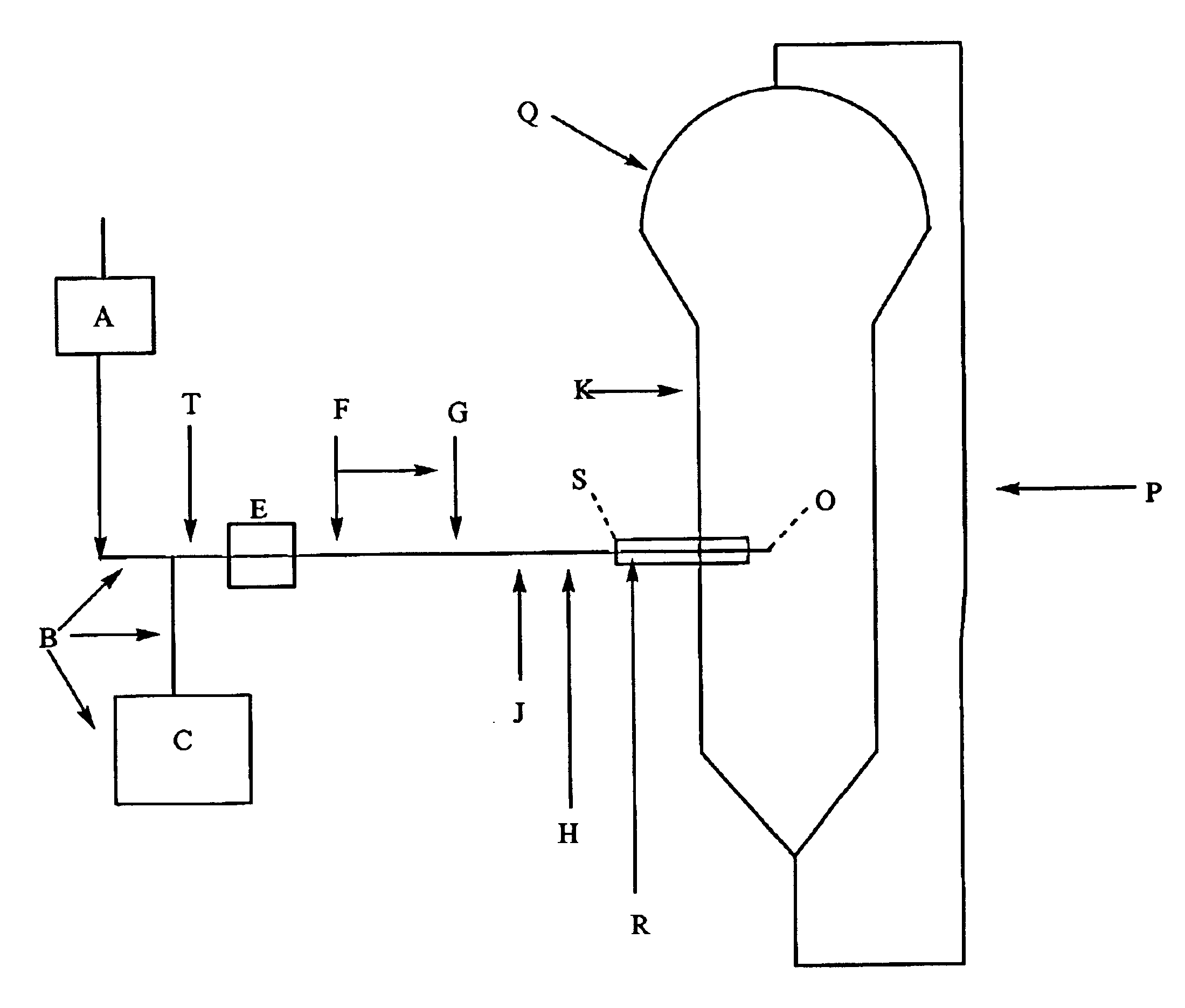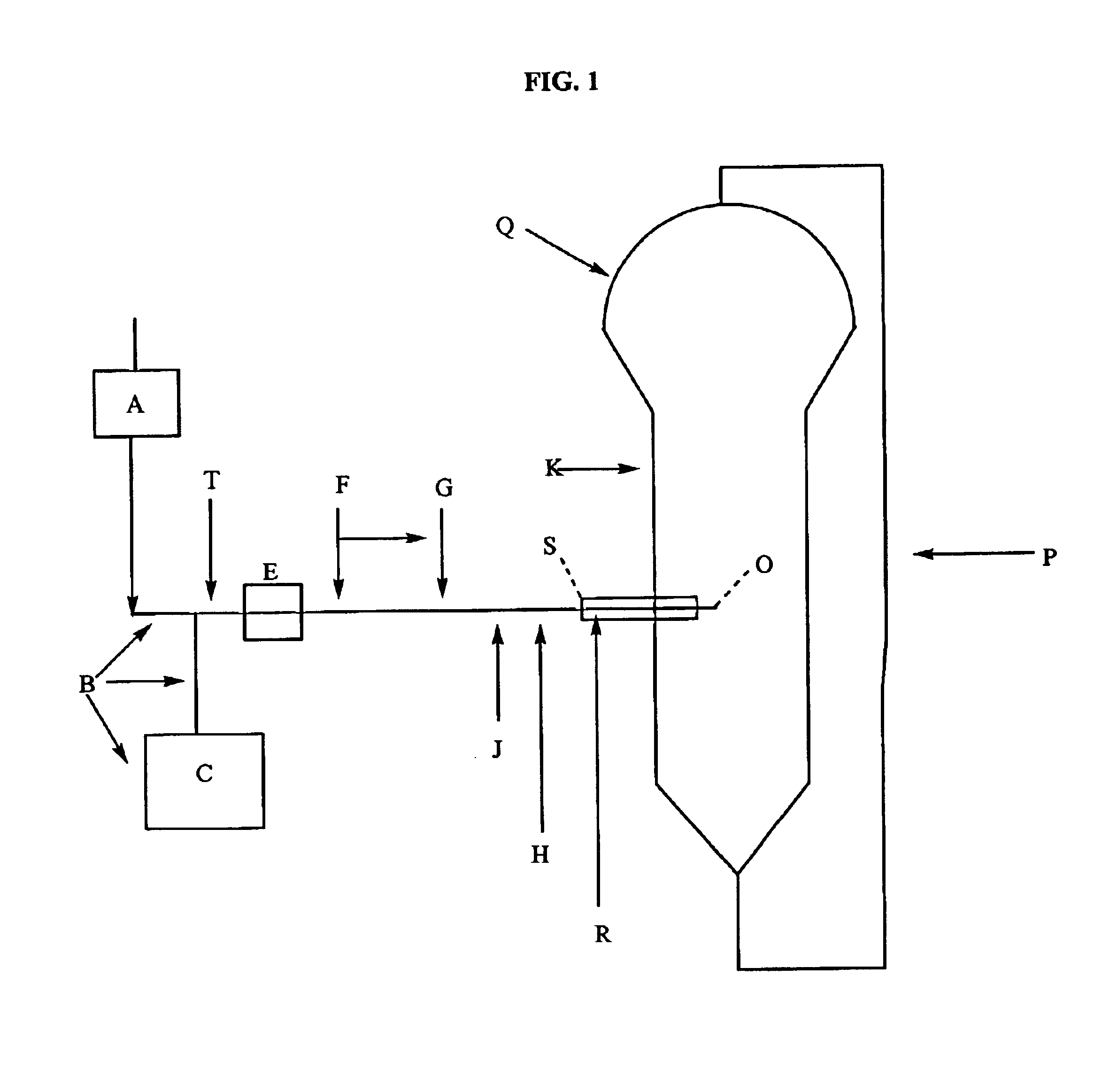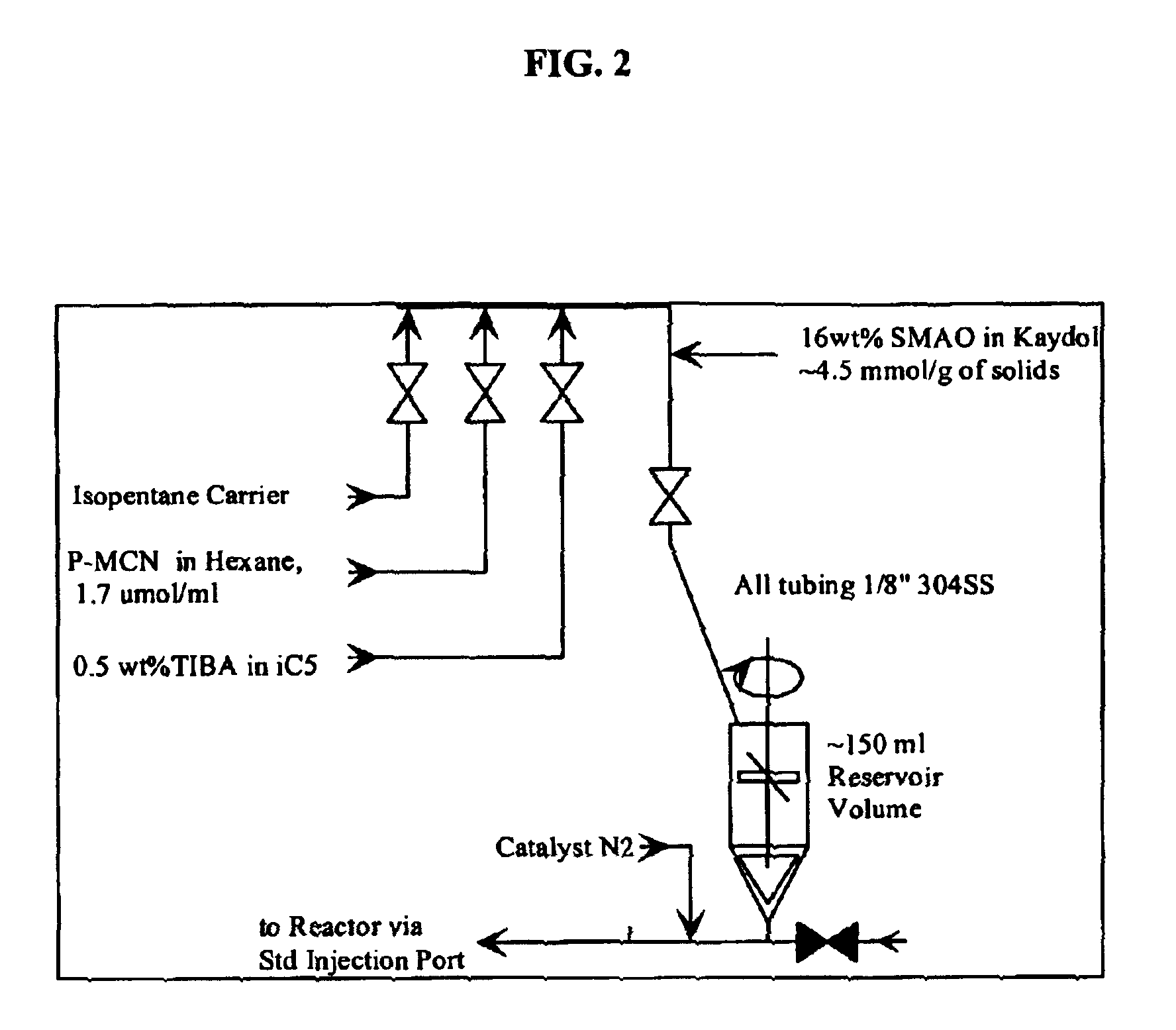Polymerization process
a polymerization process and polymerization catalyst technology, applied in the direction of physical/chemical process catalysts, catalyst activation/preparation, chemical/physical processes, etc., can solve the problems of difficult commercialization of promising catalyst systems, low activity of heavy metallocene-type catalysts, and low activity of supporting ligands
- Summary
- Abstract
- Description
- Claims
- Application Information
AI Technical Summary
Benefits of technology
Problems solved by technology
Method used
Image
Examples
example 1
Preparation of SMAO Supported Activator
For a 1 Kg batch, 1158.43 grams of 30 wt % MAO in toluene (7.3 wt % Al) available from Albemarle Corporation, Baton Rouge, La., and 2400 grams of extra toluene are charged into an 8 liter mix tank equipped with ribbon helical agitator. 984 grams of Davison 955-600 silica is added to MAO in toluene solution at ambient temperature. A 10° C. exotherm occurs from reaction of the MAO with the hydroxyl groups. The slurry mixes for 30 minutes at ambient temperature. Drying then occurs by heating the mix tank jacket to about 70° C. and reducing pressure to 0.00 mm / hg. As the slurry thickens the agitator rpm is reduced to minimum rotation, about 40-60 RPM. Then the rotation is slowly increased (to about 600 RPM) and the temperature is raised to 95° C. as the slurry turns to a dry powder. A nitrogen sweep (about 0.5 cc / min per gram of silica charged) can be used during the end of the drying step to help remove toluene from the silica pores. The material ...
example 2
Solution catalyst compound activated with slurry comprising supported activator in fluidized gas-phase reactor with shorter contact time
Polymerization performance of in-line supported bis(n-propyl cyclopentadienyl) zirconium dichloride (P-MCN) was evaluated in a 8 inch (20.3 cm) fluidized bed pilot plant reactor. The catalyst feed configuration is shown schematically in FIG. 2. P-MCN (1.7 umol / ml in hexane) was introduced in line at 0.65 g / hr. 0.5 weight % of TiBA in isopentane (200-250 cc / hr of isopentane carrier and 75-90 cc / hr of 0.5 wt % TiBA) was introduced in line. Thereafter a slurry comprising Kaydol mineral oil and 16 weight % of SMAO produced in Example 1 (4.5 mmol / g solids) was introduced in line and allowed to mix with the solution of P-MCN and TiBA for 25-35 minutes. Following the mixer, the catalyst was injected using a standard ⅛ inch (0.32 cm) injection tube with 1.05 pph of N2 blowback.
The catalyst was evaluated at LLDPE conditions, 75 C, 350 psig (2.4 MPa) total pr...
example 3
Solution catalyst compound activated with slurry comprising supported activator in fluidized gas-phase reactor with longer contact time
Polymerization performance of in-line supported bis(n-propyl cyclopentadienyl) zirconium dichloride (P-MCN) was evaluated in a 8 inch (20.3 cm) fluidized bed pilot plant reactor. The catalyst feed configuration is shown schematically in FIG. 3. P-MCN, fed at 0.56 g / hr with 65-100 cc / hr of 0.5 wt % TIBA in isopentane upstream, was contacted with 16 wt % SMAO (as produced in Example 1) in Kaydol mineral oil upstream of the 150 ml mixer. The solution and the slurry were allowed to mix for 90 to 130 minutes. 200-250 cc / hr of isopentane carrier was used to sweep the catalyst exiting the mixer to the reactor. Following the mixer, catalyst was injected using a standard ⅛ inch (0.32 cm) injection tube with 1.1 pph N2blowback.
Catalyst was evaluated at LLDPE conditions, 75° C., 350 psig (2.4 MPa) total pressure, 120 psi (0.8 MPa) ethylene, 0.017 hexene-1 comon...
PUM
| Property | Measurement | Unit |
|---|---|---|
| viscosity | aaaaa | aaaaa |
| molar ratio | aaaaa | aaaaa |
| physical | aaaaa | aaaaa |
Abstract
Description
Claims
Application Information
 Login to View More
Login to View More - R&D
- Intellectual Property
- Life Sciences
- Materials
- Tech Scout
- Unparalleled Data Quality
- Higher Quality Content
- 60% Fewer Hallucinations
Browse by: Latest US Patents, China's latest patents, Technical Efficacy Thesaurus, Application Domain, Technology Topic, Popular Technical Reports.
© 2025 PatSnap. All rights reserved.Legal|Privacy policy|Modern Slavery Act Transparency Statement|Sitemap|About US| Contact US: help@patsnap.com



